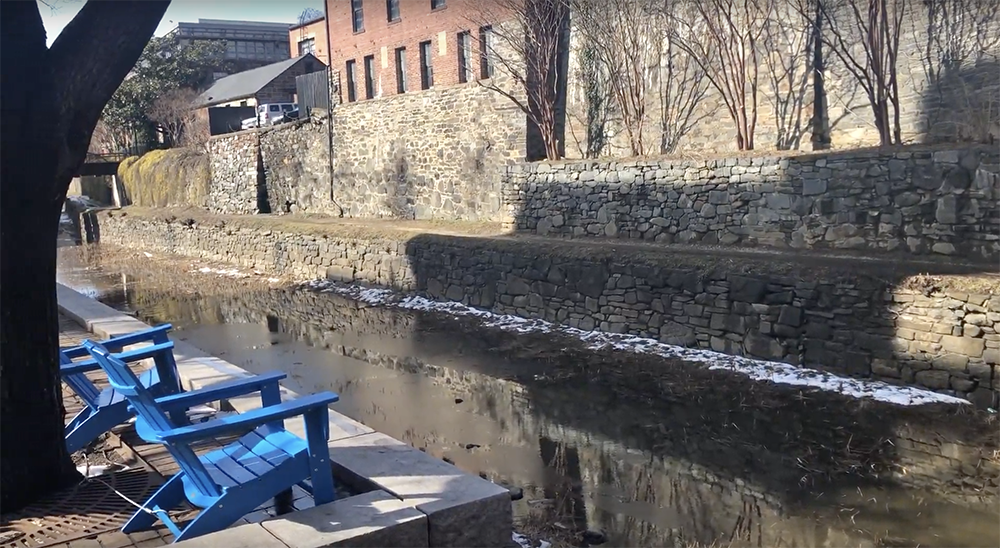A group of Georgetown residents expressed doubt that the Chesapeake and Ohio Canal can accommodate the increased traffic the National Park Service’s preferred canal revitalization plan could bring to the area at a Nov. 7 town hall.

Georgetown Heritage, a nonprofit working with the Georgetown Business Improvement District on canal efforts, and NPS representatives presented photos of the recently completed renovations on locks 3 and 4 before breaking down the two alternative plans for future renovations. The locks can individually raise and lower boats eight feet to ease major changes in elevation, according to the C&O Canal Trust.
Some residents who own homes nearby, especially those near the site for the planned event space, have expressed strong opposition to the renovation’s updates. Twenty-five residents of James Place, a condominium adjacent to the canal, responded to the plans by presenting a “Neighbors’ Opposition to C&O Plan” letter at the town hall.
The residents said the area suffers from a lack of parking spaces for buses and cars and is ill-prepared to accommodate the increase in foot traffic that a revitalized canal would bring. Many also feel that the updated look of the proposed designs is unfaithful to the C&O Canal National Historical Park’s origins and the feelings it has inspired in its long history, according to the letter.
The first plan, which the NPS prefers, proposes widening and paving pathways, increasing bridge accessibility and adding lighting and native plants to stabilize the banks. The other plan, called the “no-action alternative,” extends current management operations and demonstrates how implementing the action alternative would affect the surrounding environment.
Thursday’s town hall addressed the canal’s accessibility issues, particularly concerns with the thin towpath that runs down its length. Currently, there are few access points for wheelchairs along the path, and most sections do not pass modern accessibility standards, being far too steep, thin or improperly maintained for handicapped visitors.
The project seeks to update the path while preserving its original feel, according to Maggie Downing, director of public programs and partnerships at Georgetown Heritage.
“The towpath is historically this very narrow and confined space and is the primary way we experience the canal. That’s why our plans mainly focus on maintaining that — that sense of narrowness,” she said in an interview with The Hoya. “Today, walking the towpath can be really special and magical, but there are places where it can be kind of unsafe and not comfortable to walk on. So, we are really trying to find a way to strike that balance.”
Downing said the first plan — which was designed by the landscape architecture firm behind New York’s High Line — involves adding new bridges, viewing platforms and spaces for musical events and field trips. One area will feature a map of the entire canal cut into grass and a miniature functioning canal lock for use with school groups, and historic mule-towed canal boats will return to the canal to offer rides for tourists.
Georgetown Heritage and the NPS value residents’ feedback, especially those closest to the canal, according to Downing.
“It’s part of the reason why we’re doing a community engagement process. We want the feedback, we want to make sure that we’re listening,” Downing said. “We realize that for many, this is a personal matter.”
Funding for the canal project will come from federal funds through the NPS; local offices, such as the District of Columbia Executive Office of the Mayor and Deputy Mayor for Planning and Economic Development, the Georgetown Business Improvement District and donations.
The city believes making the canal accessible is important, according to D.C. Office of Planning Director Andrew Trueblood.
“The District provided matching funding for some of the work completed and underway,” Trueblood wrote in an email to The Hoya. “The broader proposal aligns with our values of accessibility and inclusion and will allow more people to experience and celebrate this national park.”
If the updated design is pursued, the project should be completed in fall 2020.




















